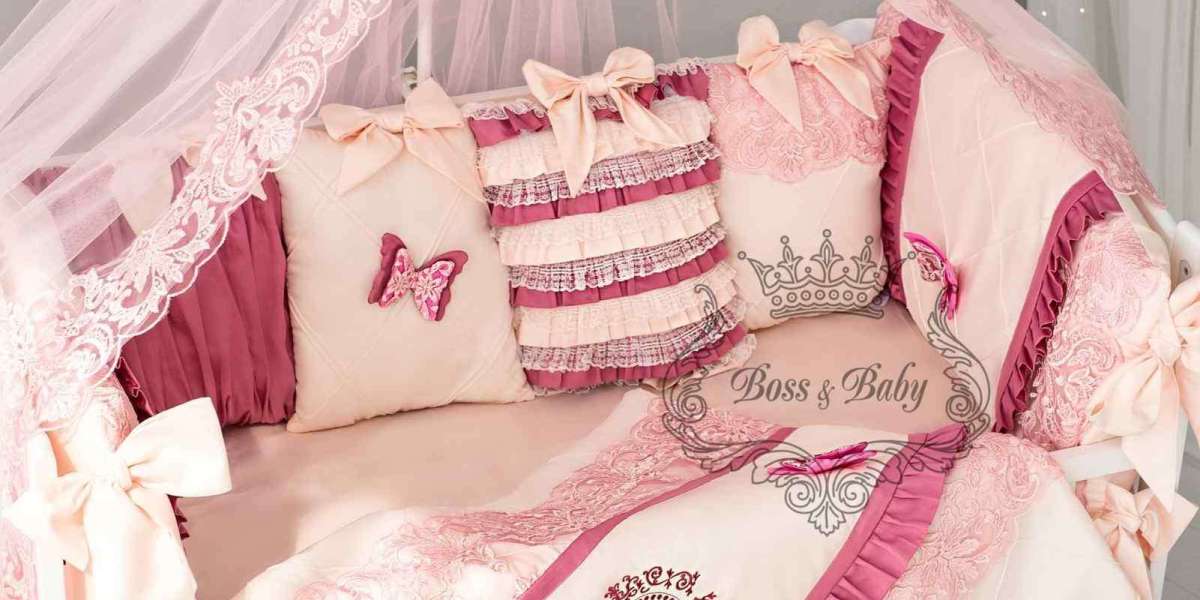For new and expecting parents, creating a nurturing and safe environment for their little one is a top priority. Every detail of the nursery is carefully considered, from the color of the walls to the choice of a crib. However, one of the most critical aspects of a baby's nursery, directly impacting their safety and comfort, is the infant bedding. The world of baby products can be overwhelming, with a plethora of options that are often more about aesthetics than safety. This comprehensive guide will walk you through everything you need to know about selecting the best infant bedding, ensuring your baby enjoys a secure and serene sleep.
The landscape of infant sleep safety has evolved significantly over the years. What was once common practice—think fluffy bumpers, soft quilts, and adorable stuffed animals in the crib—is now strongly advised against by pediatric experts. The American Academy of Pediatrics (AAP) has established clear guidelines to reduce the risk of Sudden Infant Death Syndrome (SIDS) and other sleep-related dangers. This guide is designed to demystify these recommendations and empower you to make informed decisions for your baby's bedding.
The "Bare is Best" Philosophy: Understanding Safe Infant Sleep
Before diving into the specifics of different bedding items, it's crucial to understand the foundational principle of safe infant sleep: "Bare is Best." This means the crib should be as empty as possible. The AAP recommends that infants sleep on their backs, on a firm, flat mattress with only a fitted sheet. This minimalist approach can be a significant shift for parents who envision a crib filled with soft, cuddly items. However, understanding the reasoning behind this guideline is the first step toward creating a truly safe sleep space.
Loose bedding, including blankets, pillows, bumpers, and soft toys, can pose a suffocation hazard. A baby's motor skills are still developing, and they may not be able to move their head away from an object that is obstructing their breathing. A bare crib eliminates these risks, providing a sleep environment that is both safe and comfortable.
The Essential Infant Bedding Components
While the "Bare is Best" approach simplifies the crib environment, it doesn't mean your baby can't be cozy. The focus shifts from traditional bedding sets to items that provide warmth and comfort without compromising safety. Here are the essential infant bedding components for a modern, safety-conscious nursery:
1. The Crib Mattress: The Foundation of Safe Sleep
The mattress is the most crucial part of your baby's sleep setup. A firm, flat surface is non-negotiable. Soft mattresses can conform to a baby's head shape, increasing the risk of suffocation. When shopping for a crib mattress, press on it in the center and at the edges. It should snap back quickly and not sag.
The mattress should also fit snugly in the crib. There should be no more than two fingers of space between the mattress and the sides of the crib. This prevents the baby from getting trapped in any gaps.
2. The Fitted Crib Sheet: The Only Bedding in the Crib
A fitted crib sheet is the only piece of bedding that should be inside the crib with your baby. Look for sheets that fit the mattress tightly and have elastic all the way around to ensure they stay in place. A loose sheet can become entangled and pose a suffocation risk.
Material Matters:
Cotton: A popular choice for its breathability and softness. It's also durable and easy to wash.
Organic Cotton: For parents concerned about pesticides and chemicals, organic cotton is an excellent option. It's grown without synthetic pesticides or fertilizers, making it a healthier choice for sensitive baby skin.
Bamboo: Known for its incredible softness and moisture-wicking properties, bamboo is also a sustainable choice. It's hypoallergenic and gentle on the skin.
3. Wearable Blankets: The Safe Alternative to Loose Blankets
Since loose blankets are a no-go in the crib, how do you keep your baby warm? The answer is a wearable blanket, also known as a sleep sack or sleep bag. These are essentially "baby sleeping bags" with armholes, worn over the baby's pajamas. They provide a cozy layer of warmth without the risk of covering the baby's face.
Wearable blankets come in various fabrics and TOG (Thermal Overall Grade) ratings. The TOG rating helps you choose the right sleep sack for the temperature of your nursery. A higher TOG rating means a warmer sleep sack.
4. Swaddles: For the Newborn Stage
Swaddling is the age-old practice of snugly wrapping a baby in a light blanket to mimic the feeling of being in the womb. This can help calm a fussy baby and promote longer stretches of sleep. For newborns, a swaddle can be a safe and effective way to provide comfort.
However, it's crucial to swaddle correctly. The swaddle should be snug but not too tight, especially around the hips, to allow for healthy hip development. Most importantly, you must stop swaddling as soon as your baby shows signs of being able to roll over, which can happen as early as two months. Once a baby can roll, a swaddle becomes a safety hazard as it can restrict their movement and ability to lift their head.
Non-Essential but Popular Bedding Items: A Word of Caution
The baby market is flooded with products that are visually appealing but not recommended for safe sleep. It's essential to be aware of these items and the risks they pose.
Crib Bumpers: Once a staple in nurseries, crib bumpers are now considered a significant safety hazard. They pose a risk of suffocation, strangulation, and can even be used by older babies to climb out of the crib. The AAP has a clear stance against the use of any type of crib bumper, including mesh ones.
Pillows: Babies do not need pillows. Their heads and necks are perfectly supported by a firm mattress. Pillows in the crib increase the risk of suffocation.
Quilts and Comforters: While they may come in adorable matching sets, quilts and comforters should never be placed in a crib with a sleeping baby. They are a suffocation risk. These items can be used for tummy time on the floor or as a decorative wall hanging, but not for sleep.
Stuffed Animals and Soft Toys: A bare crib is the safest crib. Stuffed animals, while cute, can obstruct a baby's breathing.
Creating a Comfortable and Safe Sleep Environment
Beyond the bedding itself, several other factors contribute to a safe and comfortable sleep environment for your infant.
Room Temperature: A cool, comfortable room is ideal for a sleeping baby. A general guideline is to keep the room between 68 and 72 degrees Fahrenheit (20-22 degrees Celsius). Avoid overdressing your baby. A good rule of thumb is to dress them in one more layer than you would be comfortable in.
Room-Sharing, Not Bed-Sharing: The AAP recommends that infants sleep in the same room as their parents, but on a separate sleep surface, for at least the first six months, and ideally for the first year. This practice can reduce the risk of SIDS by as much as 50%. Bed-sharing is not recommended due to the increased risk of suffocation, strangulation, and entrapment.
White Noise Machine: A white noise machine can help mimic the sounds of the womb and block out household noises that might disturb your baby's sleep. This can be a helpful tool for promoting a more restful sleep.
A Checklist for Safe Infant Bedding
Navigating the world of infant bedding can be simplified with a clear checklist. Here are the key takeaways for creating a safe sleep space:
Do: Use a firm, flat crib mattress that fits snugly in the crib.
Do: Use a tight-fitting fitted sheet.
Do: Place your baby on their back to sleep.
Do: Use a wearable blanket or sleep sack for warmth.
Do: Swaddle your newborn correctly and stop when they show signs of rolling.
Do: Keep the crib in your room for at least the first six months.
Don't: Use crib bumpers of any kind.
Don't: Place pillows, loose blankets, quilts, or comforters in the crib.
Don't: Put stuffed animals or other soft toys in the crib.
Don't: Bed-share with your baby.
Don't: Overdress your baby or let the room get too hot.
The Transition to Toddler Bedding
As your baby grows and transitions from a crib to a toddler bed, the rules around bedding will change. This typically happens between the ages of 18 months and 3 years. At this stage, you can introduce a small, thin pillow and a lightweight blanket. However, it's still important to avoid heavy bedding that could pose a risk.
Conclusion: Prioritizing Safety for Peaceful Sleep
Choosing the right infant bedding is about more than just decorating a nursery; it's about creating a sanctuary of safety and comfort for your most precious family member. By adhering to the "Bare is Best" principle and following the expert guidelines for safe sleep, you can have peace of mind knowing you've created the best possible environment for your baby to rest, grow, and thrive. While the minimalist approach may seem counterintuitive in a world of abundant baby products, simplicity is truly the key to safety. Focus on the essentials: a firm mattress, a fitted sheet, and a wearable blanket. With these in place, you and your baby can both enjoy more peaceful nights.



